Identifying Zones of Threat to Groundwater Resources Under Combined Climate and Land-Use Dynamics in a Major Groundwater Reservoir (MGR 406, Poland)
Abstract
1. Introduction
2. Materials and Methods
2.1. Location and Hydrogeological Conditions
2.2. Precipitation Data
2.3. Spatial Development
2.4. Assessment
3. Results
3.1. Precipitation Analysis
3.2. Spatial Development and Its Changes
3.3. Threat to Groundwater Resources
4. Discussion
5. Conclusions
Author Contributions
Funding
Data Availability Statement
Conflicts of Interest
Correction Statement
References
- Ciampittiello, M.; Marchetto, A.; Boggero, A. Water Resources Management under Climate Change: A Review. Sustainability 2024, 16, 3590. [Google Scholar] [CrossRef]
- Kleczkowski, A.S. (Ed.) Mapa Obszarów Głównych Zbiorników Wód Podziemnych (GZWP) w Polsce Wymagających Szczególnej Ochrony, Skala 1:500 000: Objaśnienia; IHiGI AGH: Kraków, Poland, 1990. [Google Scholar]
- Main Groundwater Reservoirs (MGR) in Poland. Available online: https://www.pgi.gov.pl/psh/dane-hydrogeologiczne-psh/947-bazy-danych-hydrogeologiczne/8890-gzwp.html (accessed on 10 May 2025).
- Water Law Act of 2017. Available online: https://isap.sejm.gov.pl/isap.nsf/DocDetails.xsp?id=WDU20170001566 (accessed on 14 May 2025).
- Herbich, P.; Kapuściński, J.; Nowicki, K.; Prażak, J.; Skrzypczyk, L. Metodyka Wyznaczania Obszarów Ochronnych Głównych Zbiorników Wód Podziemnych Dla Potrzeb Planowania i Gospodarowania Wodami w Obszarach Dorzeczy; Ministerstwo Środowiska: Warszawa, Poland, 2009. Available online: https://www.pgi.gov.pl/oferta-inst/wydawnictwa/ksiazki/naukowe-i-metodyczne/6252-metodyka-wyznaczania-obszarow-gzwp.html (accessed on 11 June 2025).
- Directive 2000/60/EC of the European Parliament and of the Council of 23 October 2000 Establishing a Framework for Community Action in The Field of Water Policy. Available online: https://eur-lex.europa.eu/eli/dir/2000/60/oj/eng (accessed on 12 June 2025).
- Gleeson, T.; Wada, Y.; Bierkens, M.F.P.; van Beek, L.P.H. Water balance of global aquifers revealed by groundwater footprint. Nature 2012, 488, 197–200. [Google Scholar] [CrossRef]
- Jain, V.K.; Pandey, R.P.; Jain, M.K. Spatio-temporal assessment of vulnerability to drought. Nat. Hazards 2015, 76, 443–469. [Google Scholar] [CrossRef]
- McKee, T.B.; Doesken, N.J.; Kleist, J. The relationship of drought frequency and duration of time scales. In Proceedings of the Eighth Conference on Applied Climatology, Anaheim, CA, USA, 17–23 January 1993; American Meteorological Society: Boston, MA, USA, 1993; pp. 179–186. [Google Scholar]
- Van Loon, A.F.; Van Lanen, H.A.J. A process-based typology of hydrological drought. Hydrol. Earth Syst. Sci. 2012, 16, 1915–1946. [Google Scholar] [CrossRef]
- Czerwińska-Tomczyk, J.; Rysak, A.; Łusiak, R.; Gil, R.; Zwoliński, Z. Dokumentacja Określająca Warunki Hydrogeologiczne Dla Ustanowienia Obszaru Ochronnego Zbiornika Wód Podziemnych Niecka Lubelska (GZWP nr 406); Państwowy Instytut Geologiczny: Lublin, Poland, 2008. [Google Scholar]
- Chart of Groundwater Body No. 88. Available online: https://bazadata.pgi.gov.pl/data/hydro/jcwpd/jcwpd88.pdf (accessed on 16 June 2025).
- Chart of Groundwater Body No. 89. Available online: https://bazadata.pgi.gov.pl/data/hydro/jcwpd/jcwpd89.pdf (accessed on 16 June 2025).
- Chart of Groundwater Body No. 90. Available online: https://bazadata.pgi.gov.pl/data/hydro/jcwpd/jcwpd90.pdf (accessed on 16 June 2025).
- POBORY Database, Data Available upon Request; National Geological Institute: Warsaw, Poland, 2025.
- Krajewski, S. Wody szczelinowe kredy lubelskiej. Prz. Geol. 1984, 32, 359–363. [Google Scholar]
- Krajewski, S.; Motyka, J. Model sieci hydraulicznej w skałach węglanowych w Polsce. Biul. PIG 1999, 388, 115–138. [Google Scholar]
- Institute of Meteorology and Water Management—National Research Institute. Precipitation Data. Available online: https://danepubliczne.imgw.pl/ (accessed on 13 May 2025).
- World Meteorological Organization (WMO); IPCC. Effects of Climate Change on the Water Cycle, WMO Bull. 2024. Available online: https://wmo.int/resources/wmo-bulletin (accessed on 11 June 2025).
- Hayes, M.J. Comparison of Major Drought Indices: Introduction, National Drought Mitigation Center. 2011. Available online: http://drought.unl.edu/monitoring/SPI.aspx (accessed on 11 June 2025).
- Bloomfield, J.P.; Marchant, B.P. Analysis of groundwater drought building in the standardized precipitation index approach. Hydrol. Earth Syst. Sci. 2013, 17, 4769–4787. [Google Scholar] [CrossRef]
- CORINE Land Cover 1990, 2000, 2008, 2012 and 2018. Available online: https://clc.gios.gov.pl/ (accessed on 8 May 2025).
- Natura 2000 Network. Available online: https://www.gov.pl/web/gdos/dostep-do-danych-geoprzestrzennych (accessed on 22 May 2025).
- Peters, E.; Bier, G.; van Lanen, H.A.J.; Torfs, P.J.J.F. Propagation and spatial distribution of drought in a groundwater catchment. J. Hydrol. 2006, 321, 257–275. [Google Scholar] [CrossRef]
- Krogulec, E.; Gruszczyński, T.; Kowalczyk, S.; Małecki, J.J.; Mieszkowski, R.; Porowska, D.; Sawicka, K.; Trzeciak, J.; Wojdalska, A.; Zabłocki, S.; et al. Causes of groundwater level and chemistry changes in an urban area; a case study of Warsaw, Poland. Acta Geol. Pol. 2022, 72, 495–517. [Google Scholar] [CrossRef]
- Water-Retention Potential of Europe’s Forests. A European Overview to Support Natural Water-Retention Measures; EEA Technical Report No 13/2015; Publications Office of the European Union: Luxembourg, 2015; ISBN 978-92-9213-694-9. Available online: https://www.eea.europa.eu/en/analysis/publications/water-retention-potential-of-forests (accessed on 7 May 2025).
- Thiery, W.; Gudmundsson, L.; Davin, E.L.; Seneviratne, S.I. Observed scaling of extreme precipitation with temperature in Central Europe. Environ. Res. Lett. 2019, 14, 124011. [Google Scholar]
- Fauer, D.; Rust, H.W. Nonstationary largescale statistics of precipitation extremes in Central Europe. Clim. Dyn. 2022, 59, 917–937. [Google Scholar]
- IPCC. Regional Fact Sheet—Europe. In Climate Change 2021: The Physical Science Basis. Contribution of Working Group I to the Sixth Assessment Report of the Intergovernmental Panel on Climate Change; IPCC: Geneva, Switzerland, 2021. [Google Scholar]
- Uber, M.; Panagos, P.; Ballabio, C. Past, present and future rainfall erosivity in Central Europe in response to climate change. Sci. Total Environ. 2024, 910, 168987. [Google Scholar]
- Spinoni, J.; Naumann, G.; Vogt, J. Pan-European seasonal trends and recent changes of drought frequency and severity. Glob. Planet. Change 2018, 161, 118–130. [Google Scholar] [CrossRef]
- Ionita, M.; Nagavciuc, V. Changes in drought features at European level over the last 120 years. Nat. Hazards Earth Syst. Sci. 2021, 21, 1685–1701. [Google Scholar] [CrossRef]
- Loyd-Hughes, B.; Zaidman, M.; Prudhomme, C. Trends in drought occurrence and severity at mid-latitude European meteorological stations (1951–2015). Clim. Dyn. 2022, 58, 765–783. [Google Scholar]
- Trnka, M.; Balek, J.; Štĕpánek, P.; Zahradníček, P.; Možný, P.; Eitzinger, J.; Žalud, Z.; Formayer, H.; Turňa, M.; Nejedlík, P.; et al. Drought trends over part of Central Europe between 1961 and 2014. Clim. Res. 2016, 70, 143–160. [Google Scholar] [CrossRef]
- Ionita, M.; Nagavciuc, V.; Kumar, R.; Rakovec, O. On the curious case of the recent decade, mid-spring precipitation deficit in central Europe. npj Clim. Atmos. Sci. 2020, 3, 49. [Google Scholar] [CrossRef]
- Yadav, S.K. Land Cover Change and Its Impact on Groundwater Resources: Findings and Recommendations. In Groundwater—New Advances and Challenges; Tarhouni, J., Ed.; IntechOpen: London, UK, 2023; Available online: https://www.intechopen.com/chapters/87133 (accessed on 13 June 2025).
- Foster, S.; Hirata, R.; Misra, S.; Garduño, H. Global Policy Overview of Groundwater in Urban Development—A Tale of 10 Cities! Water 2020, 12, 456. [Google Scholar] [CrossRef]
- Mohammad-Hosseinpour, A.; Molina, J.L. Improving the Sustainability of Urban Water Management through Innovative Groundwater Recharge System (GRS). Sustainability 2022, 14, 5990. [Google Scholar] [CrossRef]
- Różkowski, K.; Zdechlik, R.; Chudzik, W. Open-Pit Mine Dewatering Based on Water Recirculation—Case Study with Numerical Modelling. Energies 2021, 14, 4576. [Google Scholar] [CrossRef]
- Szczepiński, J. The Significance of Groundwater Flow Modeling Study for Simulation of Opencast Mine Dewatering, Flooding, and the Environmental Impact. Water 2019, 11, 848. [Google Scholar] [CrossRef]
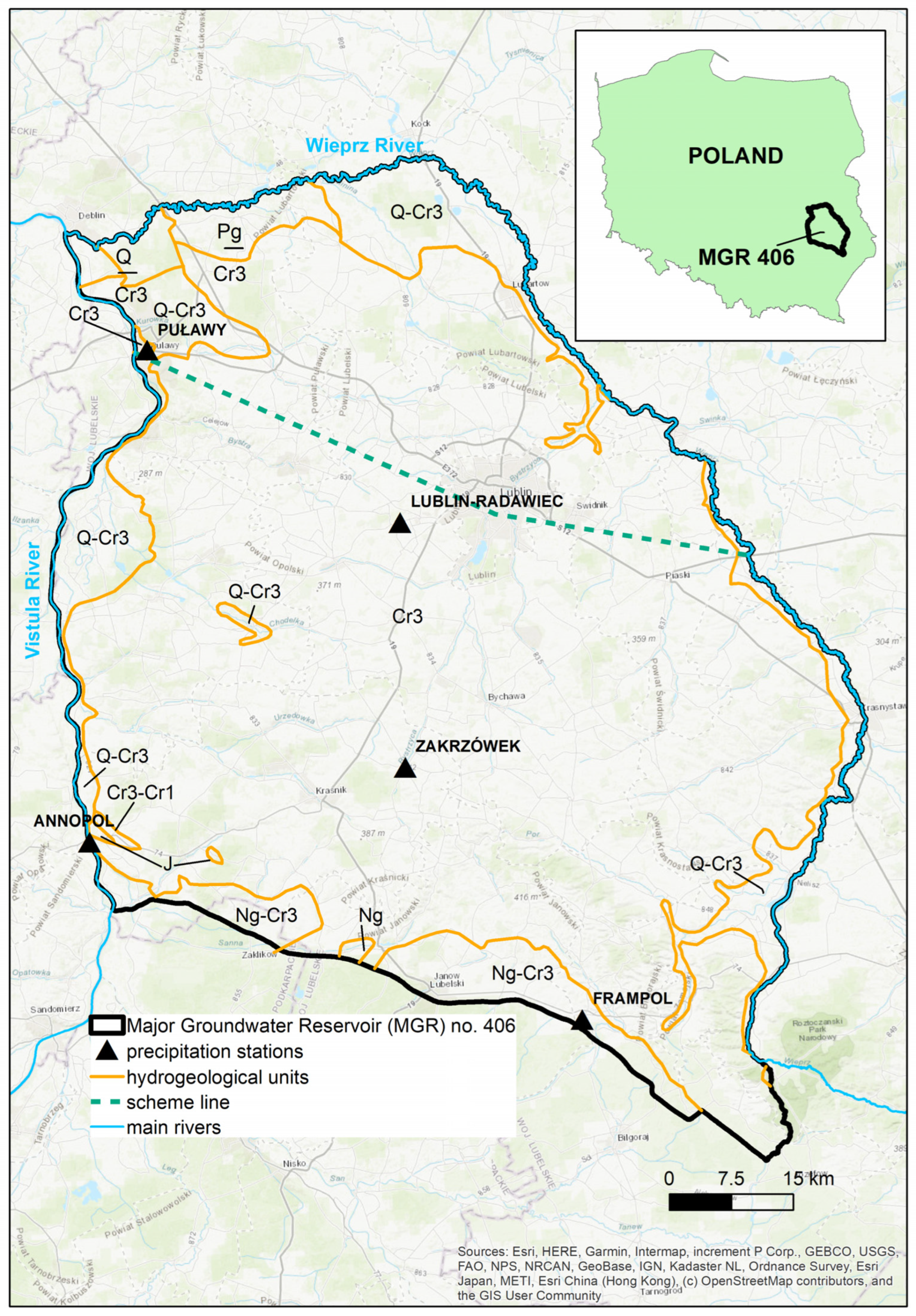
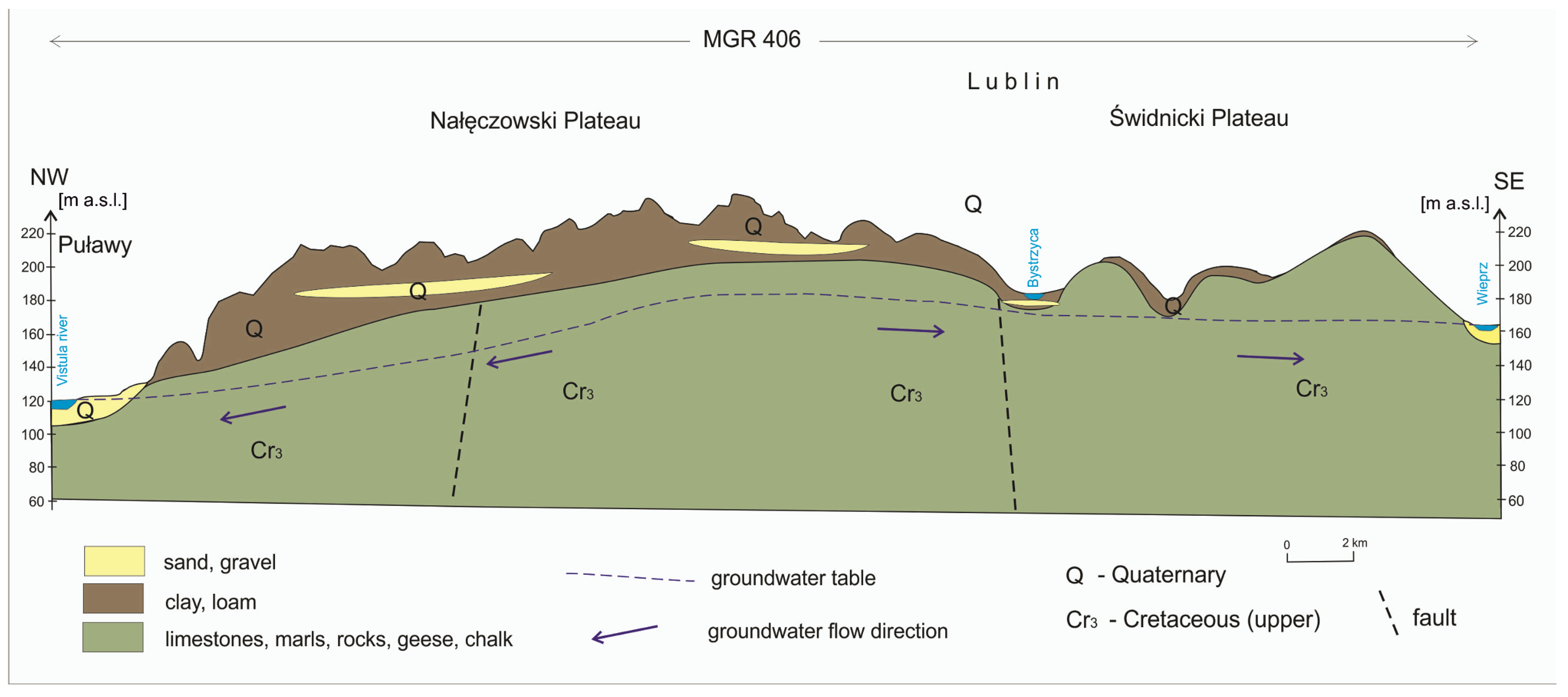
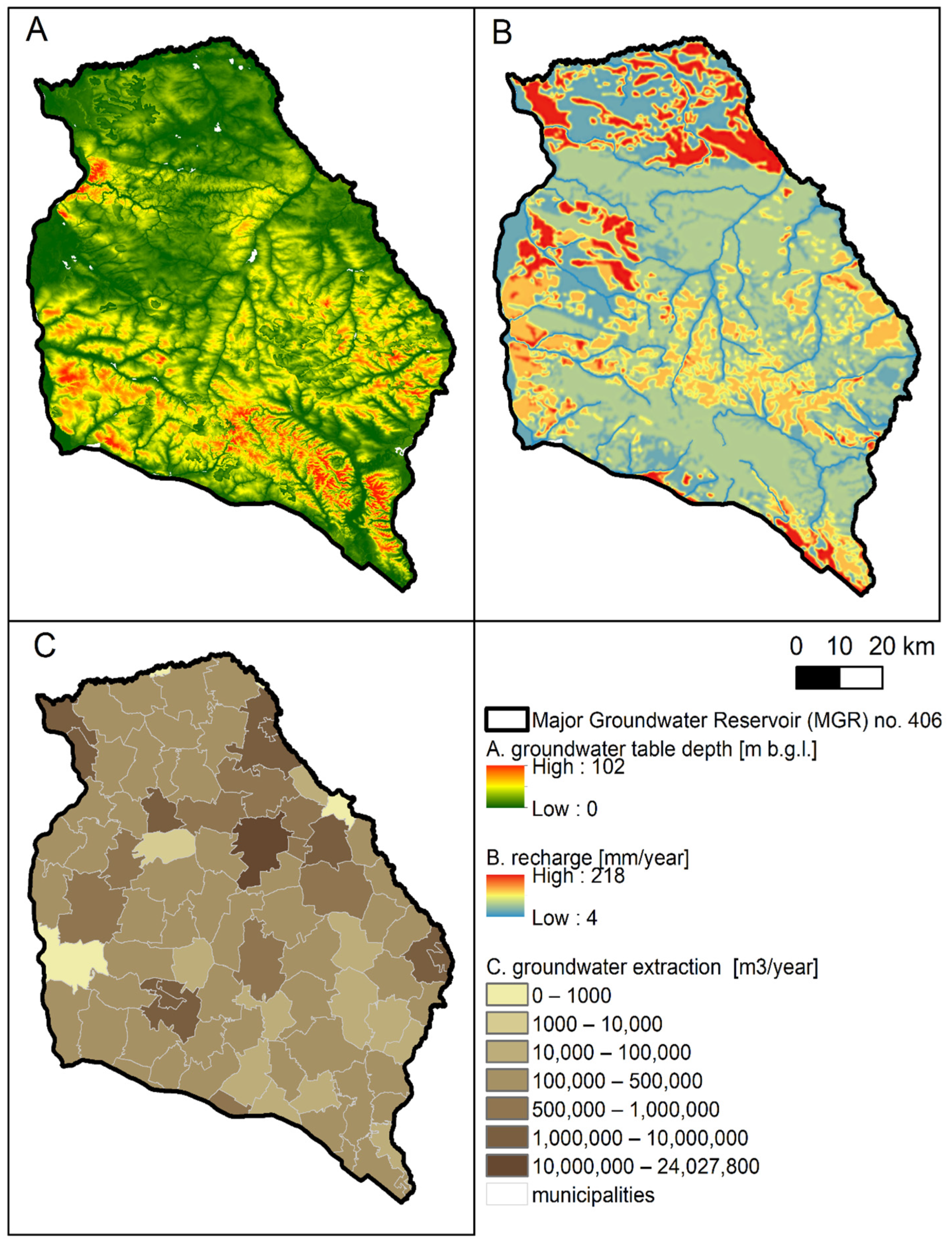

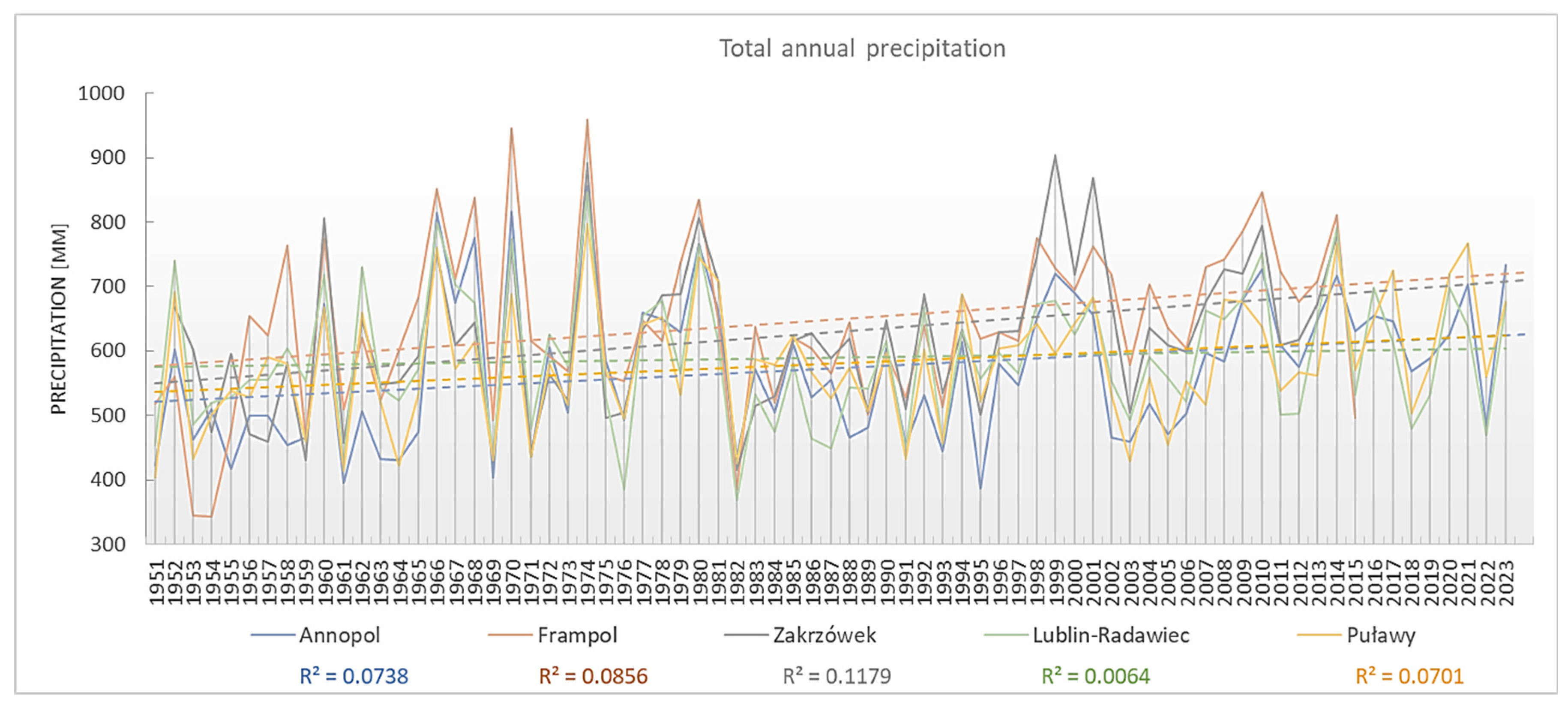
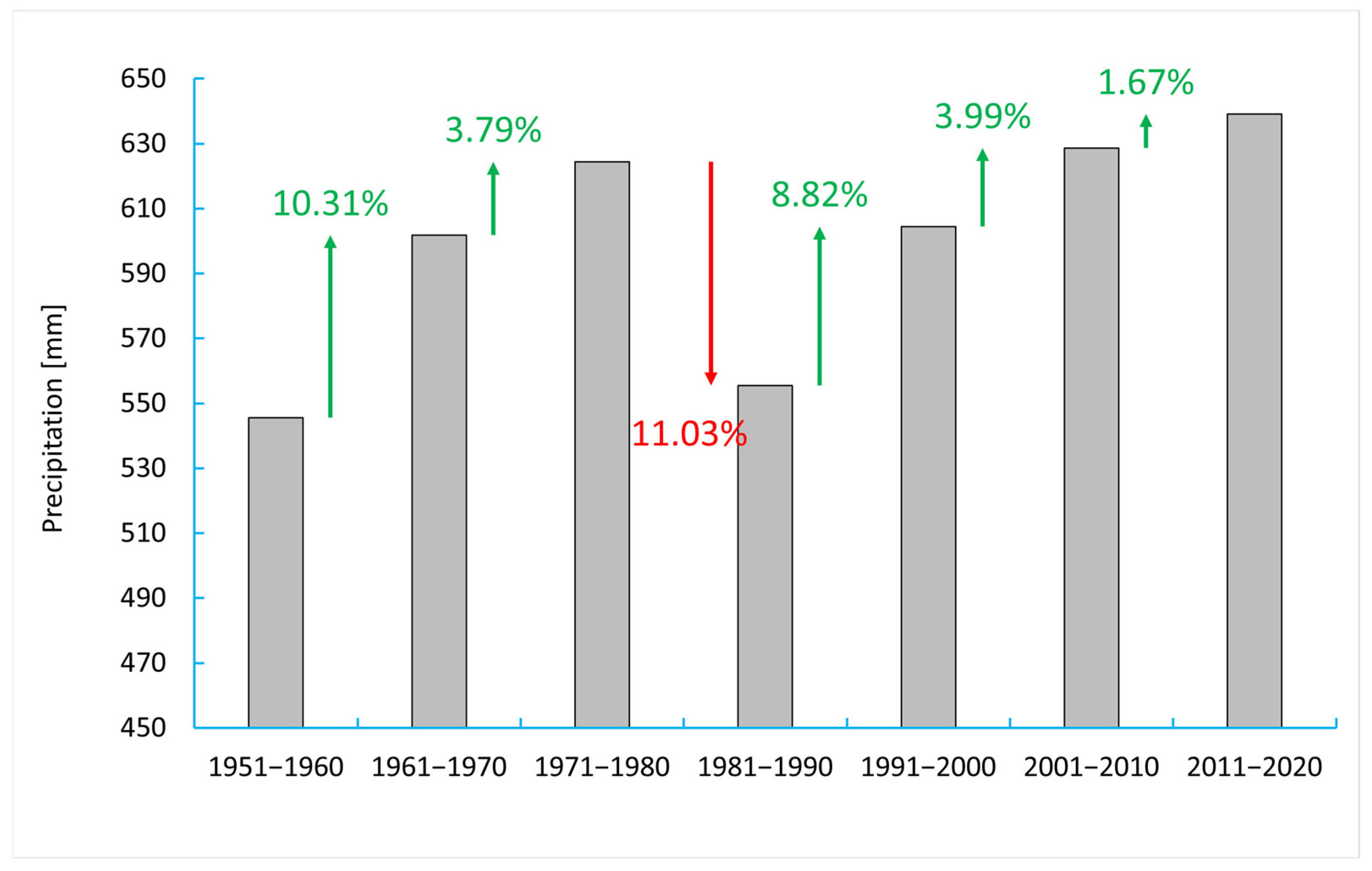

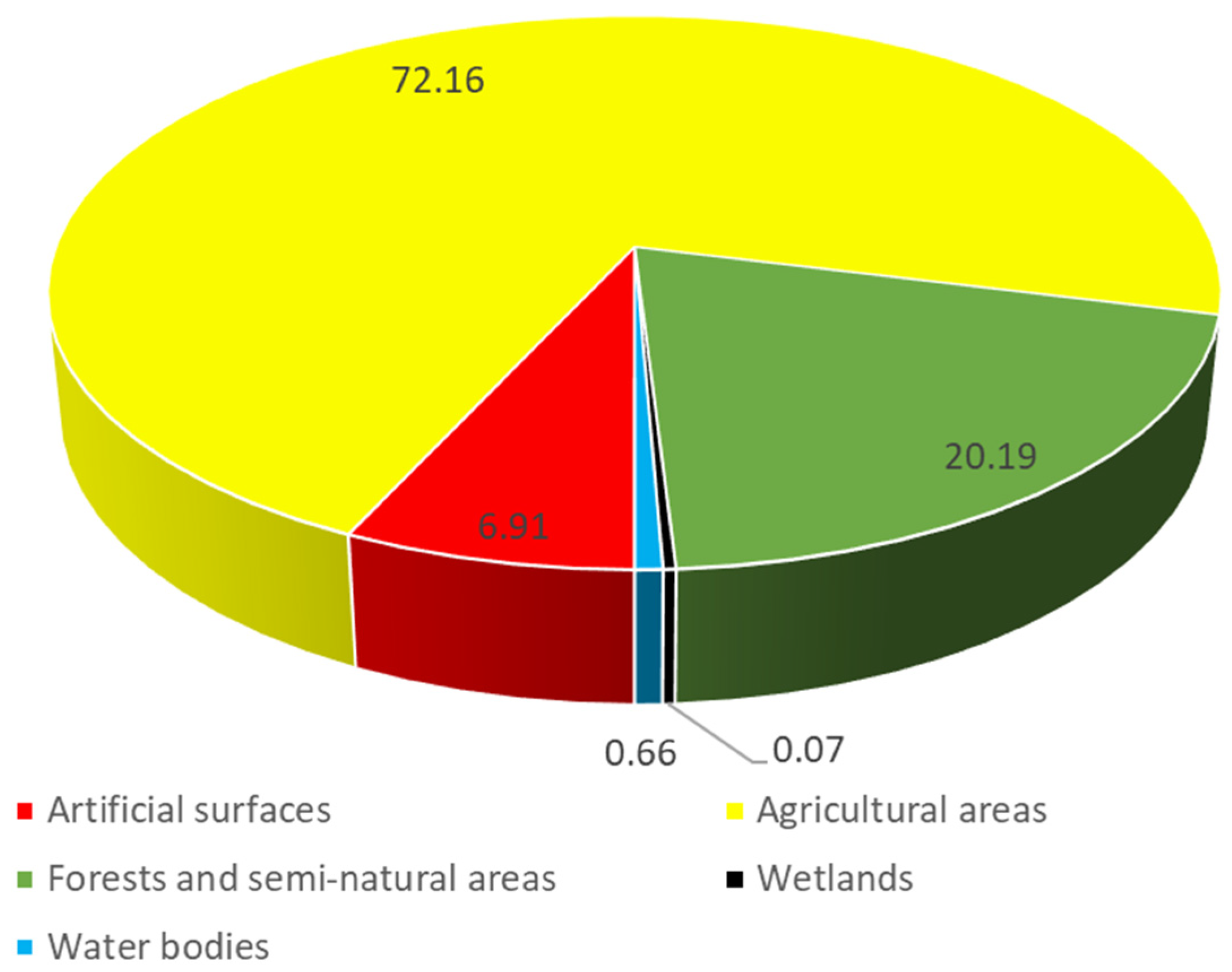

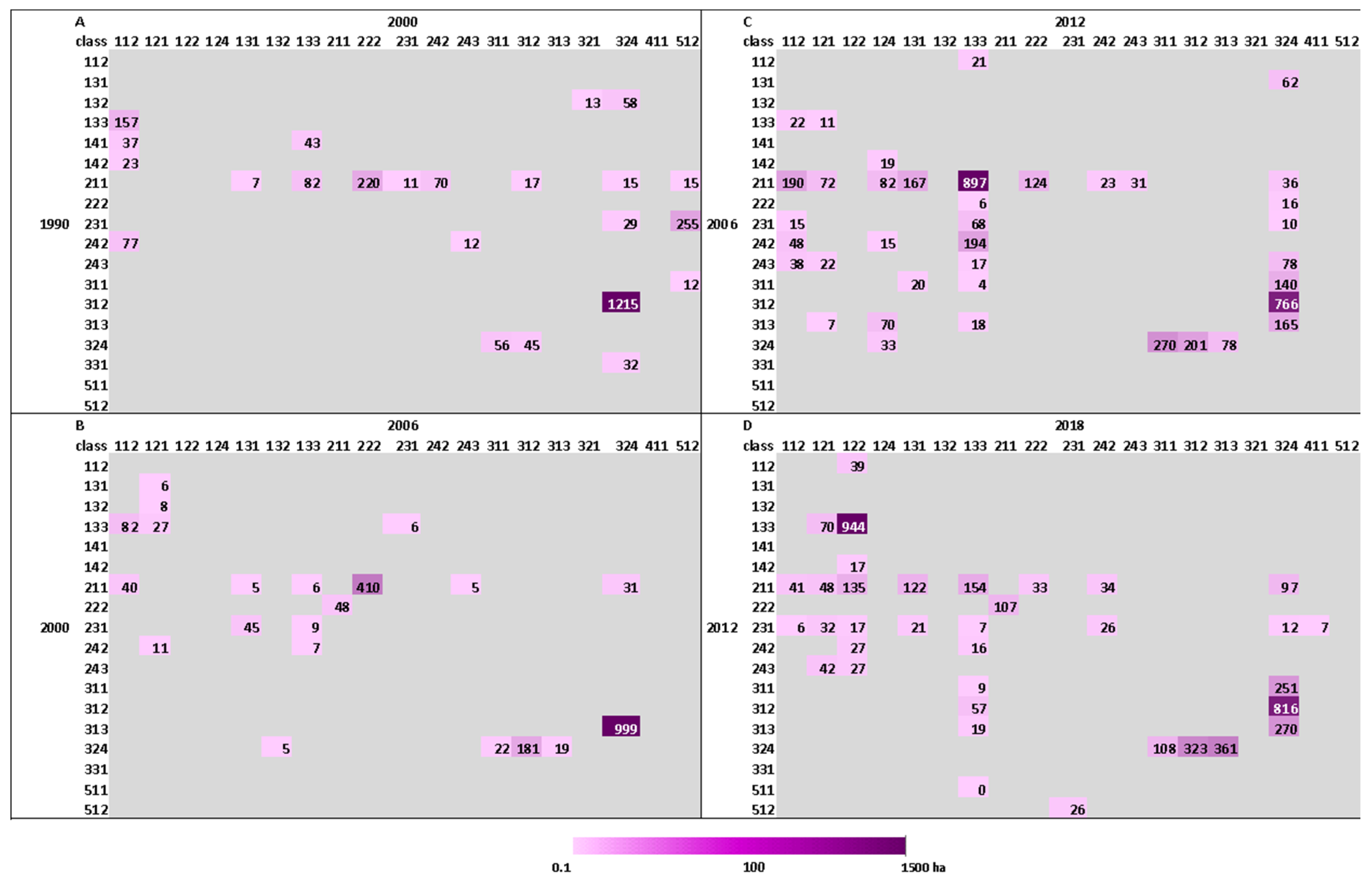
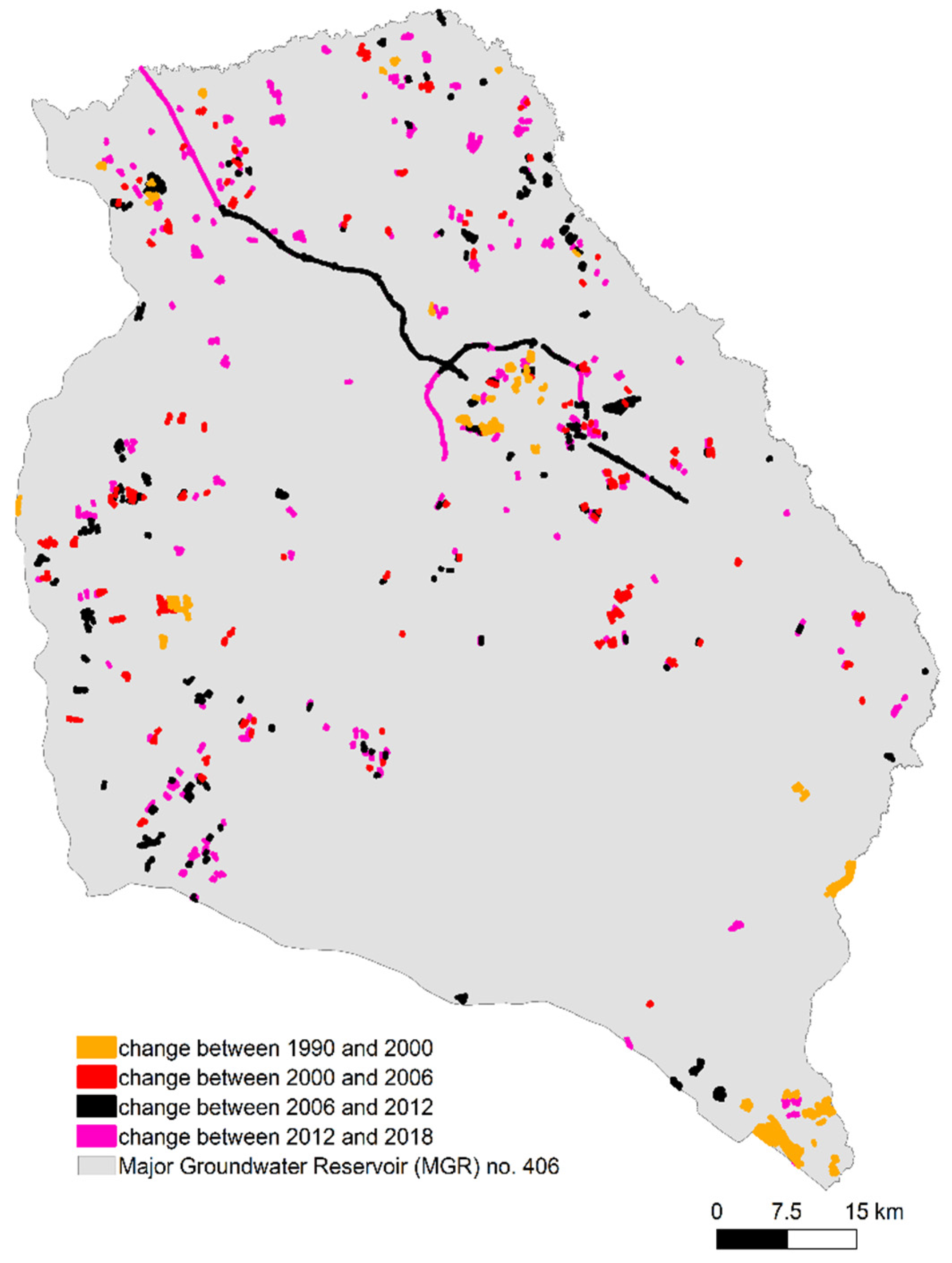
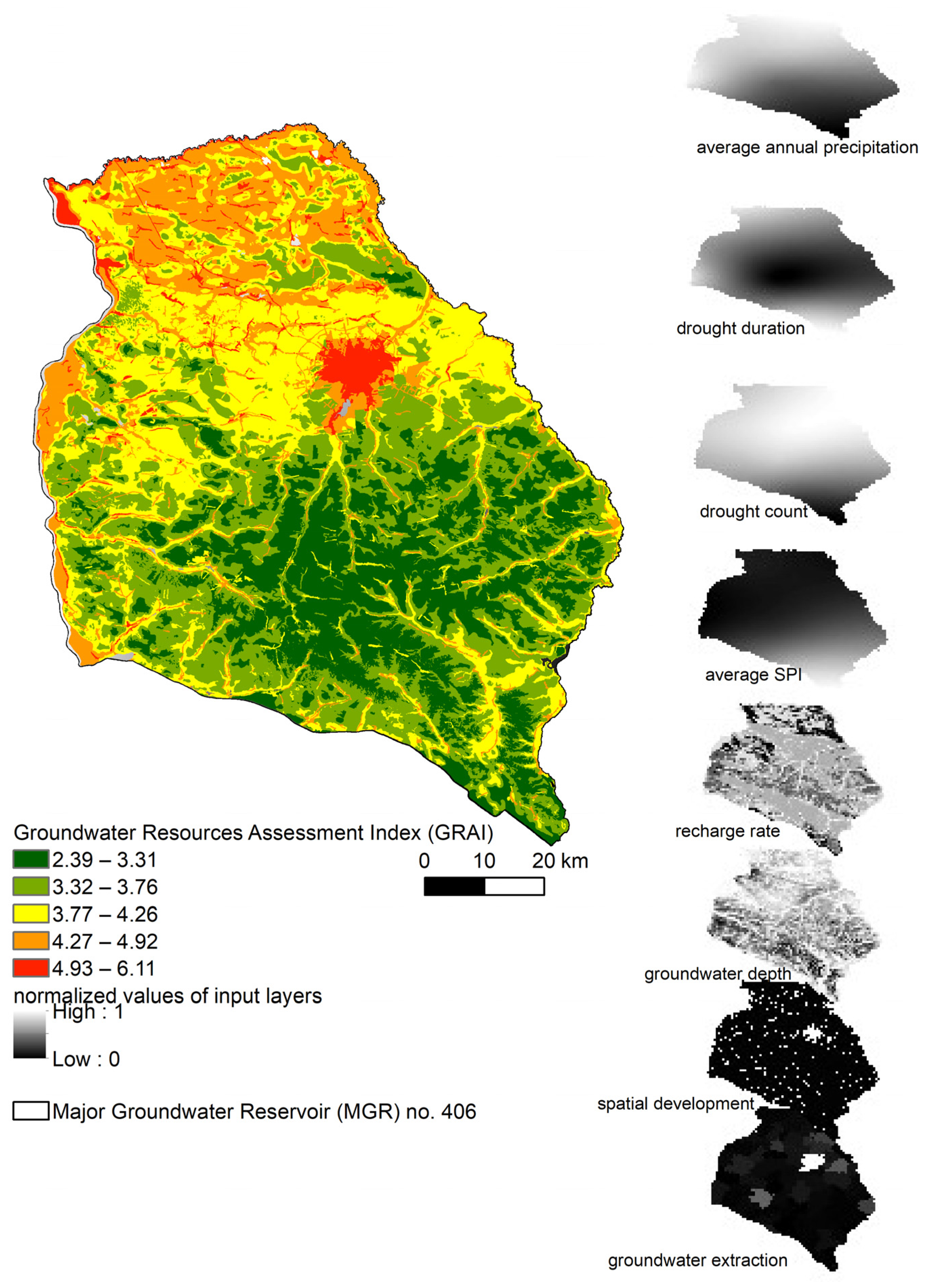
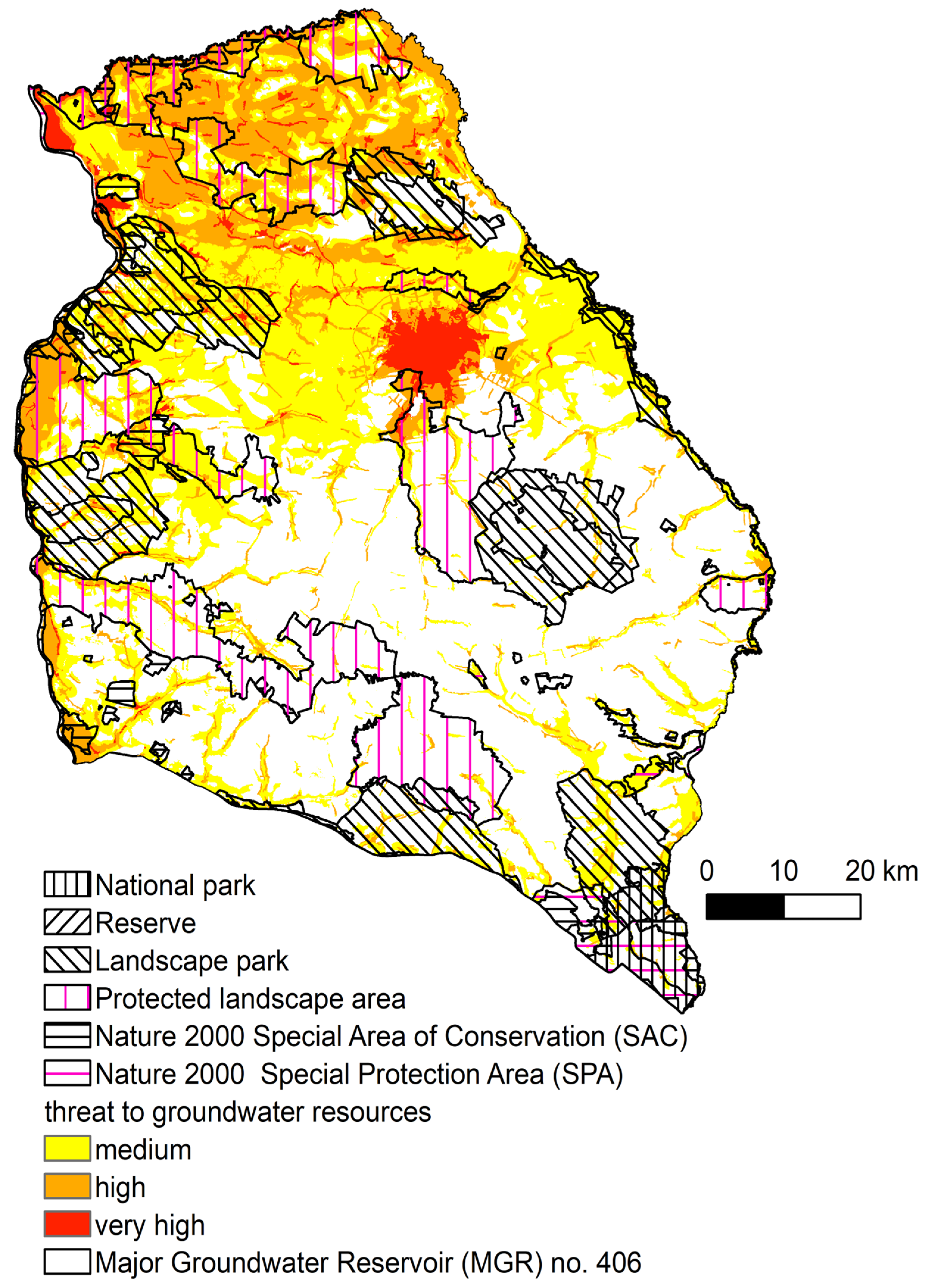
| Decade | Total Events | Avg. Duration [Months] | Avg_SPI | Max_Intensity [SPI] |
|---|---|---|---|---|
| 1951–1960 | 6 | 7.0 | −1.90 | −3.77 |
| 1961–1970 | 4 | 4.9 | −1.52 | −2.28 |
| 1971–1980 | 4 | 3.4 | −1.46 | −2.75 |
| 1981–1990 | 4 | 4.2 | −1.50 | −2.59 |
| 1991–2000 | 3 | 2.6 | −1.32 | −2.39 |
| 2001–2010 | 5 | 2.3 | −1.03 | −2.12 |
| 2011–2020 | 5 | 2.0 | −1.37 | −2.27 |
| 2021–2024 | 1 | 4.5 | −1.70 | −1.93 |
| Station Name | Y Coordinate | X Coordinate | Average SPI During Drought | Drought Count | Average Duration of Drought [Months] | Average Annual Precipitation in 1951–2024 [mm] |
|---|---|---|---|---|---|---|
| ANNOPOL | 338,982.98 | 699,235.71 | −1.44 | 21 | 6.7 | 572 |
| FRAMPOL | 317,487.94 | 759,015.21 | −1.89 | 12 | 6.5 | 641 |
| PUŁAWY | 398,626.92 | 706,217.46 | −1.51 | 23 | 6.3 | 580 |
| ZAKRZÓWEK | 348,020.72 | 737,562.48 | −1.50 | 23 | 4.5 | 620 |
| LUBLIN-RADAWIEC | 377,719.68 | 736,915.23 | −1.49 | 26 | 5.1 | 589 |
| Groundwater Resources Assessment Index (GRAI) | Threat/Risk | Total Area [km2] | Legally Protected Areas | Areas Without Legal Protection | |||
|---|---|---|---|---|---|---|---|
| from | to | [km2] | [%] | [km2] | [%] | ||
| 2.39 | 3.31 | low | 1670.1 | 679.3 | 40.7 | 990.8 | 59.3 |
| 3.32 | 3.76 | low | 2444.1 | 981.2 | 40.1 | 1462.9 | 59.9 |
| 3.77 | 4.26 | medium | 2040.4 | 720.7 | 35.3 | 1319.7 | 64.7 |
| 4.27 | 4.92 | high | 1117.1 | 431.1 | 38.6 | 686.1 | 61.4 |
| 4.93 | 6.11 | very high | 220.9 | 52.3 | 23.7 | 168.7 | 76.3 |
Disclaimer/Publisher’s Note: The statements, opinions and data contained in all publications are solely those of the individual author(s) and contributor(s) and not of MDPI and/or the editor(s). MDPI and/or the editor(s) disclaim responsibility for any injury to people or property resulting from any ideas, methods, instructions or products referred to in the content. |
© 2025 by the authors. Licensee MDPI, Basel, Switzerland. This article is an open access article distributed under the terms and conditions of the Creative Commons Attribution (CC BY) license (https://creativecommons.org/licenses/by/4.0/).
Share and Cite
Zabłocki, S.; Sawicka, K.; Porowska, D.; Krogulec, E. Identifying Zones of Threat to Groundwater Resources Under Combined Climate and Land-Use Dynamics in a Major Groundwater Reservoir (MGR 406, Poland). Land 2025, 14, 1659. https://doi.org/10.3390/land14081659
Zabłocki S, Sawicka K, Porowska D, Krogulec E. Identifying Zones of Threat to Groundwater Resources Under Combined Climate and Land-Use Dynamics in a Major Groundwater Reservoir (MGR 406, Poland). Land. 2025; 14(8):1659. https://doi.org/10.3390/land14081659
Chicago/Turabian StyleZabłocki, Sebastian, Katarzyna Sawicka, Dorota Porowska, and Ewa Krogulec. 2025. "Identifying Zones of Threat to Groundwater Resources Under Combined Climate and Land-Use Dynamics in a Major Groundwater Reservoir (MGR 406, Poland)" Land 14, no. 8: 1659. https://doi.org/10.3390/land14081659
APA StyleZabłocki, S., Sawicka, K., Porowska, D., & Krogulec, E. (2025). Identifying Zones of Threat to Groundwater Resources Under Combined Climate and Land-Use Dynamics in a Major Groundwater Reservoir (MGR 406, Poland). Land, 14(8), 1659. https://doi.org/10.3390/land14081659







